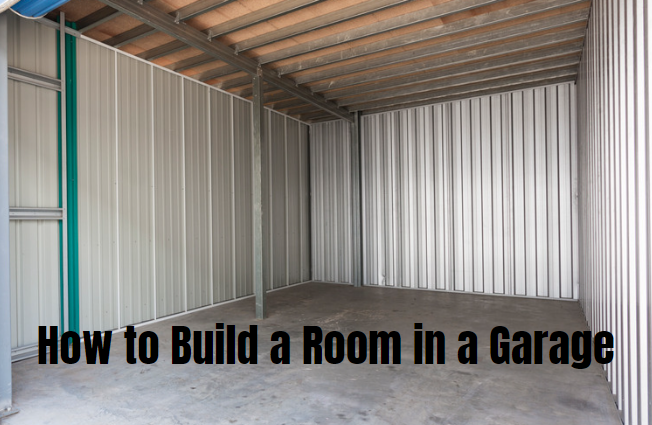Building a room in a garage is a fantastic way to add extra living space to your home. Whether you need an extra bedroom, an office, or a playroom, converting your garage is an efficient and cost-effective solution. This guide will walk you through the steps of building a room in a garage, ensuring that the process is smooth and successful.
Planning and Design
Assess Your Space
First, measure your garage to determine the available space. Consider the height, width, and length of the area. Note any obstacles like support beams or garage door tracks that might affect your design.
Determine the Room’s Purpose
Decide what the new room will be used for. This will influence the design, layout, and materials needed. Common uses include:
- Bedroom
- Home office
- Playroom
- Gym
- Studio
Create a Floor Plan
Sketch a floor plan that includes the layout of the room, the location of walls, doors, and windows. This will help you visualize the final result and ensure all elements fit well.
Obtaining Permits
Check Local Building Codes
Before starting, check local building codes and zoning laws. You may need a permit to convert your garage into a living space. Contact your local building department for specific requirements.
Apply for Permits
Submit your floor plan and other required documents to obtain the necessary permits. This step ensures your project complies with local regulations and safety standards.
Preparing the Garage
Clean and Declutter
Remove all items from the garage. This includes vehicles, tools, and stored items. A clean space makes it easier to work and ensures accurate measurements.
Address Any Structural Issues
Inspect the garage for structural issues such as cracks, leaks, or pests. Repair any damage to create a safe and stable foundation for your new room.
Insulation and Ventilation
Insulate Walls and Ceiling
Proper insulation is crucial for comfort and energy efficiency. Use high-quality insulation materials to insulate the walls and ceiling. This will help regulate temperature and reduce noise.
Install Ventilation
Ensure the room has adequate ventilation. This can be achieved through windows, vents, or an HVAC system. Good ventilation is essential for maintaining air quality and comfort.
Electrical and Plumbing
Plan Electrical Layout
Plan the electrical layout, including outlets, light fixtures, and switches. Consider the placement of furniture and appliances to determine the best locations for outlets.
Install Wiring
Hire a licensed electrician to install the wiring. This ensures the work is done safely and meets local codes. Be sure to include enough outlets and lighting for the room’s purpose.
Plumbing Considerations
If your room will have plumbing (e.g., a bathroom or kitchenette), hire a licensed plumber to install the necessary pipes and fixtures. This step may require additional permits.
Building the Room
Frame the Walls
Use wood or metal studs to frame the walls. Ensure the frame is level and securely attached to the floor and ceiling. Include openings for doors and windows as per your floor plan.
Install Drywall
Hang drywall on the framed walls. Use screws to secure the drywall to the studs. Once installed, tape and mud the seams to create a smooth surface. Sand the joints for a professional finish.
Flooring
Choose flooring that suits the room’s purpose and style. Options include carpet, hardwood, laminate, or tile. Install the flooring according to the manufacturer’s instructions.
Painting and Finishing Touches
Paint the walls and ceiling in your chosen color. Add trim and molding to complete the look. Install doors, windows, and any other finishing touches to finalize the room.
Furniture and Decor
Furnish the Room
Choose furniture that fits the room’s purpose and size. Arrange the furniture to maximize space and functionality. Consider built-in storage solutions to keep the room organized.
Decorate
Add decor that reflects your style and enhances the room’s ambiance. This can include artwork, rugs, curtains, and accessories. Personal touches make the space feel inviting and comfortable.
Steps to Build a Room in a Garage
| Step | Description | Details |
|---|---|---|
| Assess Your Space | Measure the garage space | Consider height, width, length, and obstacles |
| Determine Purpose | Decide the room’s use | Bedroom, office, playroom, gym, studio |
| Create Floor Plan | Sketch layout of walls, doors, windows | Visualize the final result |
| Check Building Codes | Verify local codes and zoning laws | Contact local building department |
| Apply for Permits | Submit required documents | Ensure compliance with regulations |
| Clean and Declutter | Remove items from garage | Vehicles, tools, stored items |
| Address Structural Issues | Inspect for cracks, leaks, pests | Repair damage |
| Insulate Walls and Ceiling | Use high-quality insulation | Regulate temperature and reduce noise |
| Install Ventilation | Ensure adequate ventilation | Windows, vents, HVAC system |
| Plan Electrical Layout | Determine outlet and light fixture placement | Consider furniture and appliance placement |
| Install Wiring | Hire a licensed electrician | Safe and code-compliant installation |
| Plumbing Considerations | Install necessary pipes and fixtures | Hire a licensed plumber, obtain permits |
| Frame the Walls | Use wood or metal studs | Ensure level and secure attachment |
| Install Drywall | Hang drywall on framed walls | Tape, mud, sand seams |
| Flooring | Choose and install suitable flooring | Carpet, hardwood, laminate, tile |
| Painting and Finishing Touches | Paint walls and ceiling | Add trim, molding, doors, windows |
| Furnish the Room | Choose and arrange furniture | Maximize space and functionality |
| Decorate | Add personal touches | Artwork, rugs, curtains, accessories |
In-depth Questions
How Do I Ensure My Garage Conversion Meets Local Building Codes?
Understanding Local Building Codes
Research local building codes before starting your project. These codes vary by location and can affect various aspects of your conversion, including insulation, ventilation, and electrical work.
Consulting with Professionals
Consult with professionals like architects or contractors who are familiar with local regulations. They can help ensure your plans meet all requirements and avoid costly mistakes.
Regular Inspections
Schedule regular inspections throughout the project. This ensures each stage complies with local codes and addresses any issues promptly.
What Are the Best Insulation Materials for a Garage Conversion?
Types of Insulation
There are several types of insulation to consider:
- Fiberglass: Cost-effective and easy to install.
- Spray Foam: Provides excellent coverage and air sealing.
- Rigid Foam: Offers high R-value per inch.
Choosing the Right Material
Choose insulation based on your climate, budget, and the room’s purpose. For example, spray foam is ideal for irregular spaces, while fiberglass is suitable for standard framing.
Installation Tips
Ensure proper installation by following manufacturer instructions or hiring a professional. Proper insulation improves energy efficiency and comfort.
How Can I Ensure Proper Ventilation in My Converted Garage Room?
Importance of Ventilation
Ventilation is crucial for maintaining air quality and comfort. It helps control humidity, reduce pollutants, and prevent mold growth.
Ventilation Options
Consider these ventilation options:
- Windows: Provide natural ventilation and light.
- Exhaust Fans: Remove stale air and moisture.
- HVAC System: Offers controlled ventilation and temperature regulation.
Professional Installation
Hire professionals to install ventilation systems. This ensures proper function and compliance with local codes.
What Are the Common Challenges in Converting a Garage into a Living Space?
Structural Challenges
Garages often have structural issues that need addressing, such as uneven floors, low ceilings, or inadequate foundations.
Electrical and Plumbing Work
Adding electrical wiring and plumbing can be complex and requires professional expertise to ensure safety and compliance with local codes.
Insulation and Climate Control
Garages are typically not insulated, which can make climate control challenging. Proper insulation and ventilation are essential to create a comfortable living space.
Conclusion
Building a room in a garage is a rewarding project that can significantly enhance your home’s functionality and value. By following the steps outlined above and addressing potential challenges, you can create a comfortable and stylish new space. At America Green Builders, we specialize in helping homeowners transform their garages into beautiful living areas. For more information on converting your garage, check out our converting garage into living space guide. Whether you’re interested in a basement man cave or need ideas for beach bathroom decor, we’re here to help. Contact us today to get started on your next home improvement project.







